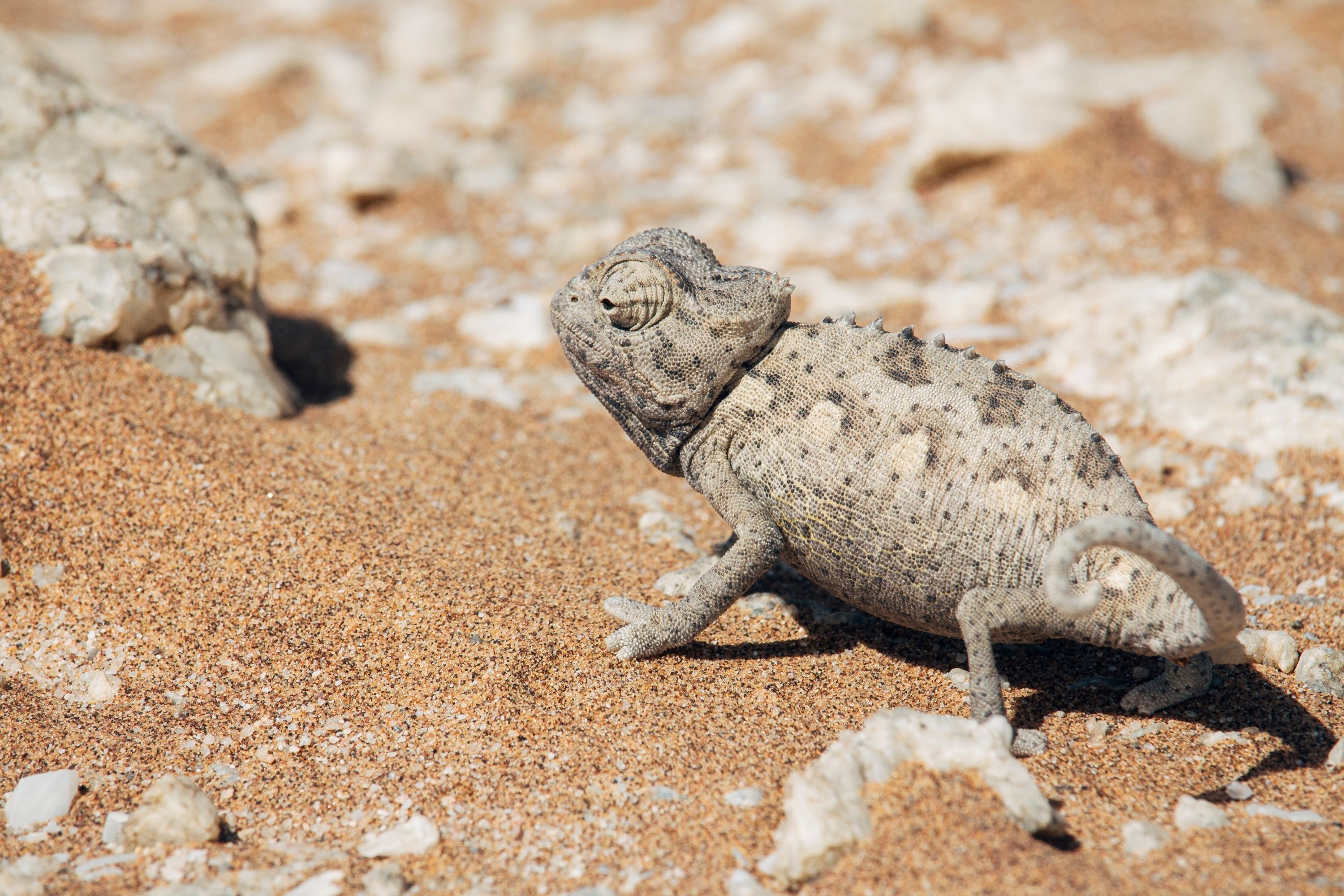Namaqua chameleon
(Chamaeleo namaquensis)

Description
The Namaqua chameleon (Chamaeleo namaquensis) is a ground-living lizard found in the western desert regions of Namibia, South Africa and southern Angola. This chameleon species occurs naturally throughout the arid western part of southern Africa, and is particularly common in the Namib Desert. It is recorded as far south as Sutherland, in the Western Cape, South Africa, and as far north as southern Angola. In the furthest eastern edge of its range, in eastern Namibia, it overlaps with the natural range of its relative, the flap-necked chameleon. Within its natural range, it inhabits arid and semi-arid areas, such as Karoo shrubland, sandy desert and gravel plains, even foraging in intertidal zones. It is terrestrial, and is usually seen walking along the ground, although young are often found climbing. Breeding can occur at any point in the year, after which eggs spend a gestation period of 35-45 days inside the mother. Adult females lay around 2-3 clutches of eggs a year, although occasionally may lay up to 4. Each clutch consists of 10-13 eggs, but may be as large as 22 eggs or as little as 6. Eggs are buried under loose gravel and in a layer of moist sand, as dried sand shrivels up the eggs. Sometimes an extension of their resting burrow may be excavated for egg laying. Such behaviour may indicate a level of parental care of eggs due to the close proximity of the eggs to the parent throughout incubation. In the wild, a 20-25cm deep burrow is excavated, and the eggs are laid in the burrow at a depth of 15cm to reach the damp layer of sand. In captive settings, eggs may be buried about 10cm under the substrate. Groups of 6-8 eggs are laid in layers, with one layer being buried before laying another directly above. Excavation and laying last 8-10 hours. Unusually in captive settings, other chameleons of either sex may assist in covering the hole after laying. Eggs have a gestation period of 35-45 days inside the mother, and take about 100 days to hatch after being laid. Compared to adults, young prefer and are more skilled at climbing. Females become sexually mature by 150 days, and males by 210 days. Like many chameleons and other lizards, females can store sperm after mating once so that more fertile eggs may be laid months later. Laying is taxing on females and depletes their fat reserves. Females subsequently eat as much as the stomach capacity allows. In captive settings, females should be allowed to eat as much as they want after laying.
Taxonomic tree:







